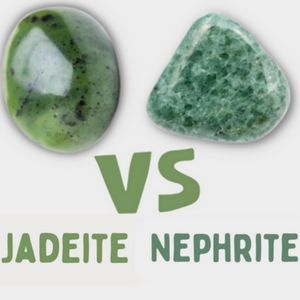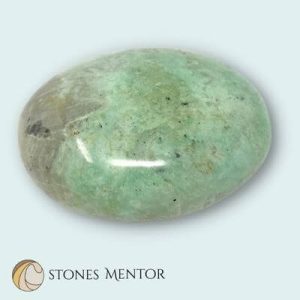Amethyst VS Tanzanite | What’s the Difference?


Amethyst VS Tanzanite is a scorching topic; today, we will answer every question related to this topic. These two are one of the most popular purple gemstones. Furthermore, they have been used in jewelry for centuries and have a rich history. Here, we compare these two stones side-by-side to help you decide your best choice.
What is Amethyst?
Amethyst is a purplish gemstone that gets its color from iron impurities. It is the official birthstone for February month. Plus, it is also associated with the zodiac sign of Pisces. Amethyst is considered one of the most popular gemstones in the world and has been used in jewelry for centuries. It is durable and resistant to scratches, making it a good choice for everyday wear. Amethyst is also relatively affordable, which makes it a great option if you’re on a budget.
What is Tanzanite?
Tanzanite is a blue-purple type of mineral, Zoisite. It was first discovered in the country of Tanzania in 1967 and got its name from its country of origin. Tanzanite is a new stone on the market and is not as widely available as Amethyst. However, it is the official birthstone for December and is associated with the zodiac sign Sagittarius. Tanzanite is a relatively soft stone and should be worn with care to avoid scratches.
Origin of Amethyst and Tanzanite:
Amethyst is found in many locations worldwide, including Brazil, Uruguay, Bolivia, and Zambia. The largest amethyst deposit in the world is located in Minas Gerais, Brazil. Whereas, Tanzanite stone is only found in the Merelani Hills of Tanzania.
Chemical Composition: (Amethyst VS Tanzanite)
Amethyst has the chemical composition of SiO2. Whereas, Tanzanite is a variety of Zoisite and has the chemical composition Ca2Al3(SiO4)3(OH). Some other chemicals differences between Amethyst and Tanzanite are as follows:
| Comparison | Amethyst | Tanzanite |
|---|---|---|
| Color | Purple | Purple, Blue |
| Chemical Composition | Silicon dioxide SiO2 | calcium aluminum hydroxy silicate |
| Crystal System | Trigonal | Orthorhombic |
| Density | 2.65 g / cm³ | 3.17 g/cm3 |
| Diaphaneity | Transparent to translucent | Transparent. Often of high clarity. |
| Dispersion | Low, 0.013 | Low, 0.012 |
| Hardness (Mohs scale) | Seven (7) | Six and a Half (6.5) |
| Luster | Vitreous | Vitreous, pearly on cleavage surfaces |
| Melting point | 1650±75 °C | 600°C |
| Refractive Index | 1.54 – 1.55 | 1.685-1.707 |
| Specific Gravity | 2.63 - 2.65 | 3.10–3.38 |
| Cleavage | Poor | Perfect, prismatic |
Color of Amethyst and Tanzanite:
Amethyst is available in many colors ranging from pale lilac to deep purple. The most prized amethysts are the deepest hues of purple. Tanzanite also varies in color, from blue to violet. The most valuable tanzanites are the vividly saturated blue violets.
The Hardness of Amethyst and Tanzanite:
Amethyst rates seven (7) on the Mohs scale of hardness, making it a durable stone that can withstand everyday wear. Whereas, Tanzanite rates a 6 to 7 on the Mohs scale, making it slightly less durable than Amethyst.
Price of Amethyst and Tanzanite:
Amethyst is more affordable than Tanzanite, pricing between $10-$100 per carat. Tanzanite is much more expensive, starting at about $100 per carat and reaching even $1000 per carat.
Uses: (Amethyst VS Tanzanite)
Amethyst and Tanzanite are two beneficial gemstones with a variety of uses. Some of these uses are as follows:

Uses Of Amethyst:
Amethyst has long been treasured as a beautiful and unique stone used to create breathtaking jewelry, decorative pieces of art, and even sculptures. It’s also known for its spiritual properties – providing clarity during meditation or serving as an aid in prayerful moments.
Uses Of Tanzanite:
Tanzanite is a precious stone with many uses. Not only can it make stunning works of jewelry, such as rings and necklaces, but its spiritual healing powers bring peace and happiness to those who use them. So, foragers looking for life’s most beautiful gifts – serenity, love, and joy – Tanzanite may be just what they need!
Overall, both Amethyst and Tanzanite are popular gemstones used in many applications. Whether for jewelry or spiritual healing, these two stones are a great addition to any collection. While they may differ in physical properties and price points, both provide a beautiful and unique look. In addition, Amethyst and Tanzanite are sure to delight any jewelry enthusiast with their stunning colors.
Mineral Class:
Amethyst is a type of quartz that belongs to the mineral class of silicates. Tanzanite is a variety of Zoisite and belongs to the mineral class of silicates.
Clarity:
Amethyst is typically found with few inclusions and is considered eye-clean. Tanzanite is also typically eye-clean, but it can sometimes contain inclusions that resemble a cat’s eyes. These inclusions are usually not visible to the naked eye and do not affect the stone’s beauty.
Physical Properties:
Amethyst has a Mohs hardness of 7 and a specific gravity of 2.65. On the other hand, Tanzanite has a Mohs hardness of 6-7 and a specific gravity of 3.17.
Cutting :
Amethyst is typically cut into rounds, ovals, cushions, and emerald cuts. Tanzanite is most often sliced into rounds and ovals.
Care Guidelines: (Amethyst VS Tanzanite)
Amethyst And Tanzanite can become dull after some time. It is important to clean and care for these stones properly in order to maintain their beauty.
Here are some tips to help take care of Amethyst And Tanzanite:
- Clean with a soft, damp cloth to remove any dirt or dust.
- Store the stones away from other jewelry items to prevent scratches.
- Avoid exposing them to harsh chemicals such as chlorine and detergents.
- Finally, keep Amethyst and Tanzanite away from extreme temperatures, which can cause damage.
With proper care, Amethyst and Tanzanite can easily last a lifetime. Properly taking care of these stones will help ensure that they remain beautiful for years to come.
Amethyst VS Tanzanite: Which is better for you?
The best gemstone for you depends on your personal preferences. For example, Amethyst is a good choice if you’re looking for a widely available and affordable purple stone. On the other hand, if you prefer a rare and more valuable stone, then Tanzanite may be your better option. Ultimately, the best gemstone is the one that you love and feel drawn to.





